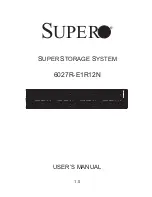
1-12
To do…
Use the command…
Remarks
Create or edit a rule
rule
[
rule-id
] {
deny
|
permit
}
protocol
[ {
established
| {
ack
ack-value
|
fin
fin-value
|
psh
psh-value
|
rst
rst-value
|
syn
syn-value
|
urg
urg-value
} * } |
destination
{
dest dest-prefix |
dest/dest-prefix | any
} |
destination-port operator port1
[
port2
]
|
dscp
dscp | fragment
|
icmpv6-type
{
icmpv6-type
icmpv6-code
|
icmpv6-message
} |
logging
|
source
{
source source-prefix |
source/source-prefix | any
} |
source-port operator port1
[
port2
] |
time-range
time-range-name
] *
Required
By default IPv6 advanced ACL
does not contain any rule.
To create or edit multiple rules,
repeat this step.
Note that if the ACL is to be
referenced by a QoS policy for
traffic classification, the
logging
and
fragment
keywords are not
supported and the
operator
argument cannot be:
z
neq
, if the policy is for the
inbound traffic,
z
gt
,
lt
,
neq
or
range
, if the
policy is for the outbound
traffic.
Configure or edit a rule
description
rule
rule-id comment
text
Optional
By default, an IPv6 ACL rule has
no rule description.
Note that:
z
You can only modify the existing rules of an ACL that uses the match order of
config
. When
modifying a rule of such an ACL, you may choose to change just some of the settings, in which
case the other settings remain the same.
z
You cannot create a rule with, or modify a rule to have, the same permit/deny statement as an
existing rule in the ACL.
z
When the ACL match order is
auto
, a newly created rule will be inserted among the existing rules
in the depth-first match order. Note that the IDs of the rules still remain the same.
You can modify the match order of an IPv6 ACL with the
acl ipv6 number
acl6-number
[
name
acl6-name
]
match-order
{
auto
|
config
} command but only when it does not contain any rules.
Configuring an Ethernet Frame Header ACL
Ethernet frame header ACLs, also called Layer 2 ACLs, match packets based on Layer 2 protocol
header fields such as source MAC address, destination MAC address, 802.1p priority (VLAN priority),
and link layer protocol type.
Summary of Contents for H3C S7500E Series
Page 43: ...3 12...
















































